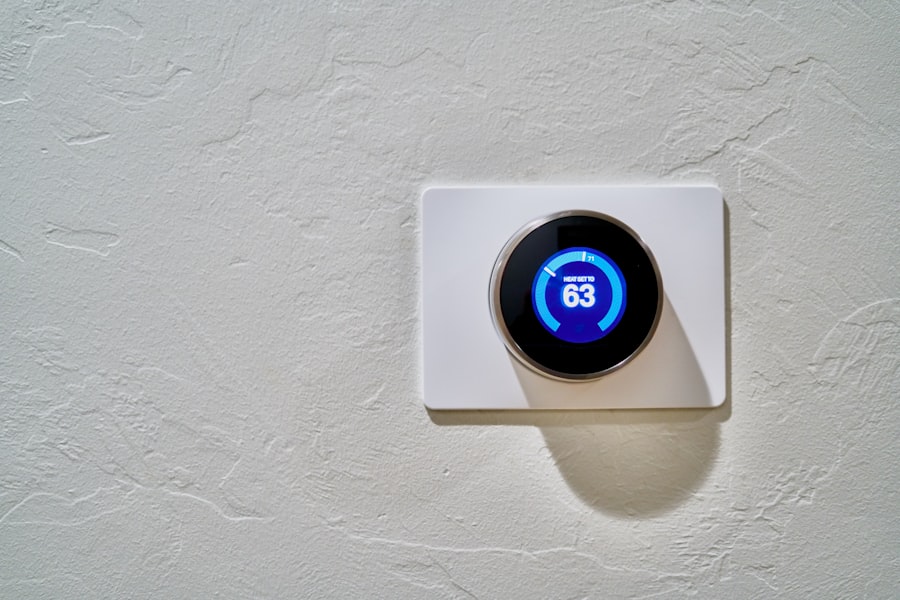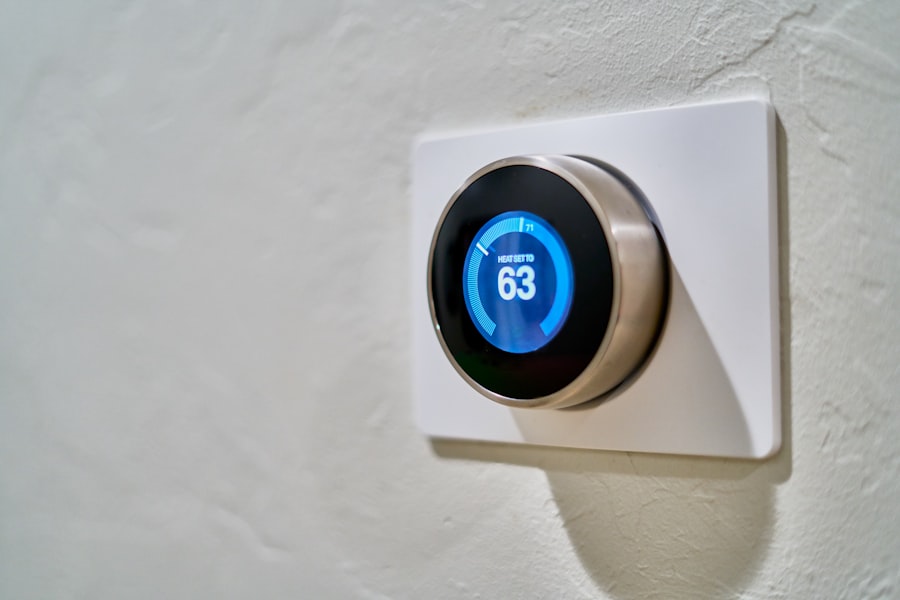When residing in a rented property, it is crucial to comprehend one’s energy consumption to make well-informed decisions about reducing energy costs. Begin by familiarising oneself with the energy bills and meters in the home. Take note of the various energy sources utilised, such as electricity, gas, or oil, and understand how each contributes to overall energy usage.
Moreover, consider conducting an energy audit to identify areas of inefficiency in the home. This may involve inspecting insulation, windows, and appliances to determine where energy is being wasted. By understanding one’s energy usage, one can commence making environmentally friendly changes that will not only reduce energy expenses but also benefit the environment.
Another aspect of understanding energy usage in a rented property is being aware of peak consumption times. This knowledge can help one adjust habits to avoid using energy during these peak periods, which often incur higher costs. For instance, if the energy provider offers time-of-use pricing, one can schedule activities such as laundry and dishwashing during off-peak hours to economise on energy expenses.
Understanding energy usage also involves being mindful of the appliances and electronics in the home that consume the most energy. By identifying these energy-intensive items, one can make targeted changes to reduce their impact on overall energy consumption.
Summary
- Understanding your energy usage in a rented dwelling is crucial for identifying areas where you can make eco-friendly changes to reduce expenses.
- Making eco-friendly changes, such as using energy-efficient appliances and lighting, can significantly reduce your energy expenses and environmental impact.
- Communicating with your landlord about energy efficiency can lead to mutually beneficial solutions, such as installing insulation or upgrading heating systems.
- Investing in energy-efficient appliances and lighting may require an initial outlay, but the long-term savings and environmental benefits make it a worthwhile investment.
- Implementing energy-saving habits in your daily routine, such as turning off lights and unplugging devices when not in use, can make a significant difference in reducing energy usage and expenses.
Making Eco-Friendly Changes to Reduce Energy Expenses
Once you have a good understanding of your energy usage, you can start making eco-friendly changes to reduce your energy expenses in your rented dwelling. One of the most effective ways to do this is by improving the insulation in your home. Poor insulation can lead to significant energy loss, as heat escapes in the winter and enters in the summer.
By sealing drafts, adding weather stripping, and insulating attics and walls, you can reduce the amount of energy needed to heat and cool your home, ultimately lowering your energy expenses. Another eco-friendly change you can make is to upgrade to energy-efficient appliances. Look for appliances with high Energy Star ratings, which are designed to use less energy without sacrificing performance.
This can include refrigerators, washing machines, dishwashers, and more. Additionally, consider replacing traditional incandescent light bulbs with energy-efficient LED bulbs. LED bulbs use significantly less energy and last much longer than traditional bulbs, making them a cost-effective and eco-friendly choice for reducing energy expenses in your rented dwelling.
Communicating with Your Landlord about Energy Efficiency

When it comes to making eco-friendly changes in a rented dwelling, it’s important to communicate with your landlord about energy efficiency. Start by discussing any concerns you have about the current energy usage and expenses in the property. This can open up a dialogue about potential improvements that can benefit both you and the landlord.
For example, if there are areas of the home that could benefit from better insulation or weatherproofing, your landlord may be willing to make these upgrades to improve the property’s energy efficiency. Additionally, consider proposing the installation of energy-efficient appliances and lighting in the property. By explaining the long-term cost savings and environmental benefits of these upgrades, you may be able to persuade your landlord to invest in these eco-friendly changes.
It’s also important to communicate with your landlord about any changes you plan to make yourself, such as installing programmable thermostats or smart technology to monitor and control energy usage. Keeping an open line of communication with your landlord about energy efficiency can lead to positive changes that benefit both you and the property.
Investing in Energy-Efficient Appliances and Lighting
| Appliance/Lighting | Energy Saving | Cost Saving | Environmental Impact |
|---|---|---|---|
| LED Bulbs | Up to 80% energy saving | Longer lifespan, lower electricity bills | Reduces carbon emissions |
| Energy-Efficient Refrigerator | Up to 40% energy saving | Lower electricity bills | Reduces greenhouse gas emissions |
| Energy Star Appliances | Up to 30% energy saving | Lower electricity bills | Reduces environmental impact |
Investing in energy-efficient appliances and lighting is a key step towards reducing energy expenses in a rented dwelling. When it comes to appliances, look for those with high Energy Star ratings, as these are designed to use less energy while still providing top-notch performance. This can include refrigerators, washing machines, dishwashers, and more.
By investing in these energy-efficient appliances, you can significantly reduce your energy usage and expenses over time. In addition to appliances, consider upgrading the lighting in your rented dwelling to be more energy-efficient. Traditional incandescent light bulbs are notorious for their high energy consumption and short lifespan.
By replacing them with energy-efficient LED bulbs, you can save on energy expenses while also enjoying longer-lasting and brighter lighting. LED bulbs use significantly less energy and last much longer than traditional bulbs, making them a cost-effective and eco-friendly choice for reducing energy expenses in your rented dwelling.
Implementing Energy-Saving Habits in Your Daily Routine
In addition to making physical changes to your rented dwelling, implementing energy-saving habits in your daily routine can also help reduce energy expenses. Start by being mindful of your heating and cooling habits. During the winter, lower your thermostat by a few degrees and wear warmer clothing indoors to reduce the need for excessive heating.
In the summer, use fans and close blinds during the hottest parts of the day to keep your home cooler without relying heavily on air conditioning. Another energy-saving habit to implement is being mindful of water usage. Simple actions like taking shorter showers, fixing leaky faucets, and only running the dishwasher or washing machine with full loads can all contribute to lower water heating costs and reduced overall energy usage.
Additionally, consider unplugging electronics and appliances when they’re not in use to prevent “phantom” energy consumption. By incorporating these energy-saving habits into your daily routine, you can make a significant impact on reducing your energy expenses in a rented dwelling.
Utilizing Smart Technology to Monitor and Control Energy Usage

Utilizing smart technology is a modern and effective way to monitor and control energy usage in a rented dwelling. One popular option is installing programmable thermostats that allow you to set specific temperatures for different times of day. This can help you avoid unnecessary heating or cooling when you’re not at home or during off-peak hours when energy costs are higher.
Additionally, smart thermostats can provide insights into your heating and cooling patterns, helping you identify opportunities for further efficiency improvements. Another smart technology option is using smart plugs and power strips to control electronics and appliances remotely. This allows you to turn off devices when they’re not in use or set schedules for when they should be powered on or off.
By having this level of control over your energy usage, you can make informed decisions about when and how you consume energy in your rented dwelling. Furthermore, consider investing in smart lighting systems that allow you to adjust brightness levels and schedules from your smartphone or other devices. By utilising smart technology to monitor and control your energy usage, you can make significant strides towards reducing your energy expenses.
Taking Advantage of Government Grants and Incentives for Energy Efficiency
Finally, when looking to reduce energy expenses in a rented dwelling, it’s worth exploring government grants and incentives for energy efficiency. Many governments offer financial assistance or tax incentives for making eco-friendly upgrades to properties. This can include rebates for installing energy-efficient appliances, insulation upgrades, solar panels, and more.
By taking advantage of these grants and incentives, you can offset some of the costs associated with making eco-friendly changes in your rented dwelling. Additionally, some governments offer low-interest loans specifically for energy-efficient home improvements. These loans can help cover the upfront costs of upgrades like insulation, windows, heating systems, and more.
By leveraging these financial resources, you can make significant improvements to the energy efficiency of your rented dwelling without breaking the bank. Be sure to research what grants and incentives are available in your area and take advantage of any that align with your eco-friendly goals for reducing energy expenses in your rented dwelling. In conclusion, understanding your energy usage in a rented dwelling is crucial for making informed decisions about reducing energy expenses.
By familiarising yourself with the different sources of energy used in your home and conducting an energy audit, you can identify areas of inefficiency that can be addressed through eco-friendly changes. Communicating with your landlord about potential improvements and investing in energy-efficient appliances and lighting are key steps towards reducing energy expenses. Implementing energy-saving habits in your daily routine and utilising smart technology can further enhance your efforts to monitor and control energy usage.
Finally, taking advantage of government grants and incentives for energy efficiency can help offset some of the costs associated with making eco-friendly upgrades to your rented dwelling. By incorporating these strategies into your approach, you can make significant strides towards reducing your energy expenses while also contributing to a more sustainable future.
If you’re looking to reduce energy costs in your rented home, you may also be interested in learning about the best eco-friendly boilers for a sustainable home. This article from Eco Friendly Home and Garden provides valuable information on how to make your home more energy-efficient and environmentally friendly. Check it out here.
FAQs
What are some common ways to reduce energy costs in rented homes?
Some common ways to reduce energy costs in rented homes include using energy-efficient appliances, sealing drafts and leaks, using energy-saving light bulbs, and adjusting the thermostat to save energy.
Is it possible to make energy-efficient improvements in a rented home?
Yes, it is possible to make energy-efficient improvements in a rented home with the landlord’s permission. This may include installing energy-efficient appliances, adding insulation, and sealing drafts and leaks.
What are some energy-saving tips for renters?
Some energy-saving tips for renters include using curtains or blinds to keep out the sun in the summer and retain heat in the winter, unplugging electronics when not in use, and using power strips to easily turn off multiple devices at once.
Are there any government schemes or grants available to help renters reduce energy costs?
Yes, there are government schemes and grants available to help renters reduce energy costs. These may include the Energy Company Obligation (ECO) scheme, which provides funding for energy-efficient improvements, and the Warm Home Discount scheme, which offers a one-off discount on electricity bills.
How can renters find out if their home is energy efficient?
Renters can find out if their home is energy efficient by requesting an Energy Performance Certificate (EPC) from their landlord or letting agent. The EPC provides information on the energy efficiency of the property and recommendations for improving it.


